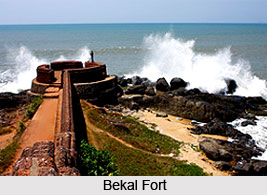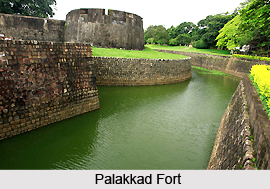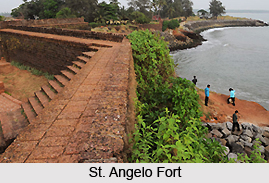 Forts in Kerala stand as witnesses of the glorious past of south India and presently serve as important monuments of the country. Built in ancient times, some of the monuments have ruined over time, while some have still retained their original grandeur. Most of the forts hold national significance and have been preserved by the Archaeological Survey of India. Apart from being popular tourist spots these forts also narrate numerous events and tales of the past and help in providing a better understanding to the socio-cultural scenario of the bygone eras. Forts in Kerala also represent the strategic and impressive architecture of ancient India.
Forts in Kerala stand as witnesses of the glorious past of south India and presently serve as important monuments of the country. Built in ancient times, some of the monuments have ruined over time, while some have still retained their original grandeur. Most of the forts hold national significance and have been preserved by the Archaeological Survey of India. Apart from being popular tourist spots these forts also narrate numerous events and tales of the past and help in providing a better understanding to the socio-cultural scenario of the bygone eras. Forts in Kerala also represent the strategic and impressive architecture of ancient India.
Anchuthengu Fort
Anchuthengu Fort, also known as Anjengo Fort, was constructed by the British East India Company in the year 1695 after obtaining permission from the Queen of Attingal. It is located in Thiruvananthapuram district and was the first signalling station for the ships arriving from England. It served as the first permanent post of East India Company on the Malabar Coast and had a crucial role in the Anglo-Mysore War.
Bekal Fort
Bekal Fort, located in Kasaragod district, is accredited as the largest fort of the state. The fort houses an observation tower which helped in tracking even the smallest movements of enemy and played an important role in the fort`s defence. The fort stands in the sea and three fourth of the exterior of the fort is constantly drenched with waves. Bekal Fort has a zigzag entrance and trenches all around which exhibit the defence strategies of the fort.
Chandragiri Fort
Chandragiri Fort is a 17th century fort situated in Kasaragod district. Presently in ruins, the fort stands along the bank of river Payaswini. This river in olden days served as the border of two powerful kingdoms namely Thulunadu and Kolathunadu.
Cranganore Fort
Cranganore Fort, situated in Thrissur district, is also known as Kodungallur Fort. It was constructed in 1523 A.D. by the Portuguese with the name Fortaleza da Sao Tome. It was later captured by the Dutch and Tipu Sultan.
 East Fort
East Fort
East Fort stands in the Thiruvananthapuram city of Kerala. The name of the fort has been derived from its eastern entrance which has been constructed by the Kings of Travancore. Over years the fort has been transformed into a commercial hub with branded jewellery showrooms in the fort premise.
Hosdurg Fort
Hosdurg Fort is an imposing fort located in the Kasaragod district of Kerala. Structured with round bastion, the fort has an impressive architecture. It was built by Somashekara Nayaka belonging to the Keladi Nayaka dynasty of Ikkeri.
Nedumkotta
Nedumkotta, also known as Travancore lines, was a defence fortification built along the northern borders of the former Travancore State and passed through the territories of the then Cochin State. It was constructed by the King of Travancore, Dharma Raja Karthika Thirunal, with the permission and support of the Kingdom of Kochi. The fort served as a defence from the threats and invasions of northern kingdoms, especially Zamorins of Kozhikode. The major part of the fortification got demolished during wars and with heavy rains.
Palakkad Fort
Palakkad Fort is also famed as Tipu`s Fort and stands in the Palakkad town of Kerala. Constructed in 1766 ACE by Hyder Ali, it is enlisted amongst the best preserved forts of the state.
Pallipuram Fort
Pallipuram Fort is situated in Ernakulum district. It was built in the year 1503 by the Portuguese and is regarded as the most ancient European fort in India. In 1661 the fort was captured by the Dutch and was sold to the Kingdom of Travancore in 1789. This hexagonal shaped fort is also popular as Alikotta.
St. Angelo Fort
St. Angelo Fort is also called as Kannur Kotta or Kannur Fort and is located at a distance of 3 kilometres from Kannur city. It faces the Arabian Sea. The fort has been well preserved by the Archaeological Survey of India and forms a popular tourist spot.
 Tellicherry Fort
Tellicherry Fort
Tellicherry Fort, in Kannur district, was established by the British East India Company in 1708 to extend their control over Malabar Coast. It exhibits an exquisite architecture with strong flanking bastions, huge walls, elaborately carved doors and secret tunnels to the sea. This historical monument is presently under the preservation of Archaeological Survey of India.
William Fort
William Fort is located in Thrissur district and is locally known as Chettuva Fort. It was built by the Dutch East India Company in 1714 after obtaining permission from Kingdom of Cochin. The possession of the fort changed many hands and is currently under the conservation of Archaeological Survey of India.




